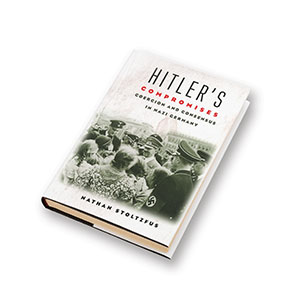 In his opus, The History of the Decline and Fall of the Roman Empire, English historian Edward Gibbon refers to the Emperor Augustus as the “subtle tyrant.” The phrase may seem like a contradiction in terms, but it actually contains a profound insight about the true nature of tyranny. Dictators from the ancient world to modern times have rarely, if ever, simply wielded omnipotent power. Instead, they have had to manipulate their counselors and followers, often pitting them against one other, all while keeping a wary eye on broader public sentiment, ready to make tactical compromises whenever necessary in order to achieve their long-term aspirations.
In his opus, The History of the Decline and Fall of the Roman Empire, English historian Edward Gibbon refers to the Emperor Augustus as the “subtle tyrant.” The phrase may seem like a contradiction in terms, but it actually contains a profound insight about the true nature of tyranny. Dictators from the ancient world to modern times have rarely, if ever, simply wielded omnipotent power. Instead, they have had to manipulate their counselors and followers, often pitting them against one other, all while keeping a wary eye on broader public sentiment, ready to make tactical compromises whenever necessary in order to achieve their long-term aspirations.
In Hitler’s Compromises, Nathan Stoltzfus, a professor of history at Florida State University, argues that the Nazi dictator fits firmly into this mold. Stoltzfus’s ambitious study seeks to correct the perception of the Nazi state as a seamless totalitarian organization that easily cowed Germans into unthinking obedience. The author suggests there was more to it than that: rather than seek to rely automatically on outright terror, Hitler was surprisingly prepared to compromise politically in order to avoid jeopardizing his popularity with the German people. Throughout, his highest goal was to exploit his hold on Germans to weld them into a true National Socialist Volksgemeinschaft, or people’s community.
As Stoltzfus reminds us, Hitler’s path to the German chancellorship was itself based on the shrewd calculation that he needed to achieve power democratically, especially after the failure of the 1923 Beer Hall Putsch, when Hitler was imprisoned in Landsberg. Once he became chancellor, Hitler immediately jailed and tortured communists, socialists, and Jews. But Stoltzfus observes that “many Germans saw the Nazi terror against Jews and leaders on the Left as rightly targeting the nation’s troublemakers, and the dictatorship also sought and received popular acceptance in ostracizing those it identified as social outsiders.” Unlike in Joseph Stalin’s Soviet Union, terror was not indiscriminate.
At the same time, Stoltzfus emphasizes that Hitler regularly restrained his subordinates from escalating their persecution of the churches during wartime. Hitler also interceded to prevent civilians from being punished for flouting evacuation orders. By 1943 propaganda minister Joseph Goebbels complained, “The people know exactly where to find the leadership’s soft spot and will always exploit it.”
Stoltzfus might have emphasized, however, that as it became clear that the war was lost, the regime became increasingly radicalized in its pursuit of genocide. But the surprising thing isn’t that Hitler failed. It’s that he came as far as he did. Stoltzfus demonstrates that by pretending to be moderate at key points, Hitler worked to enlist Germans to fulfill his mission of building a New Order, a sobering reminder about the threat posed to any democratic society by a crafty demagogue.—Jacob Heilbrunn is editor of the foreign policy magazine, the National Interest, and author of They Knew They Were Right: The Rise of the Neocons (2008).
This review was originally published in the November/December 2016 issue of World War II magazine. Subscribe here.





